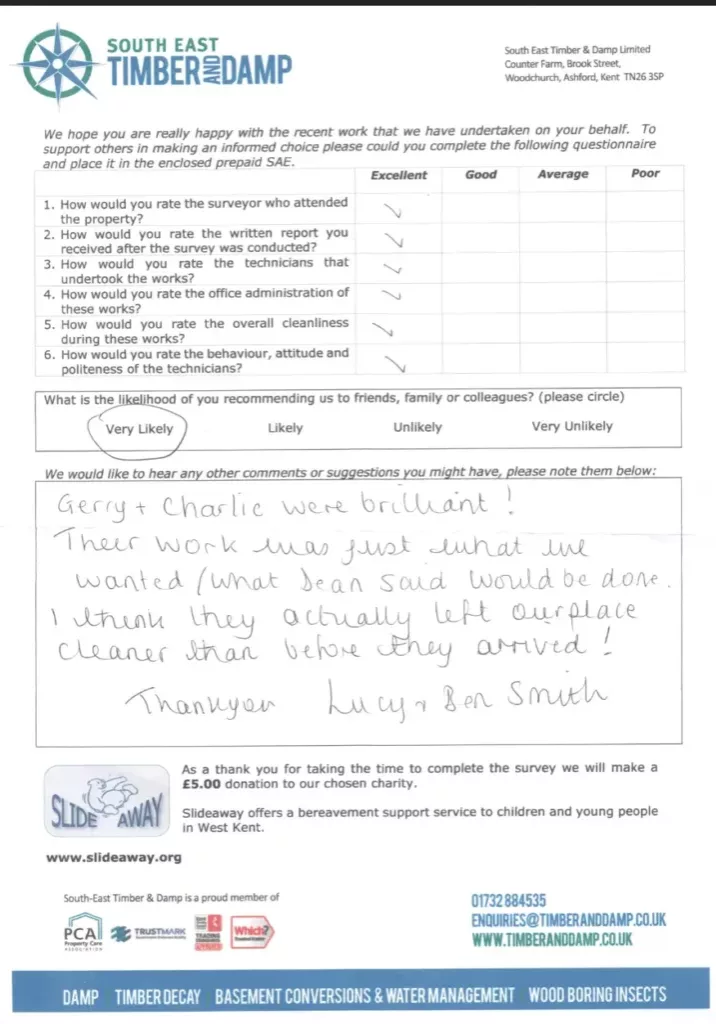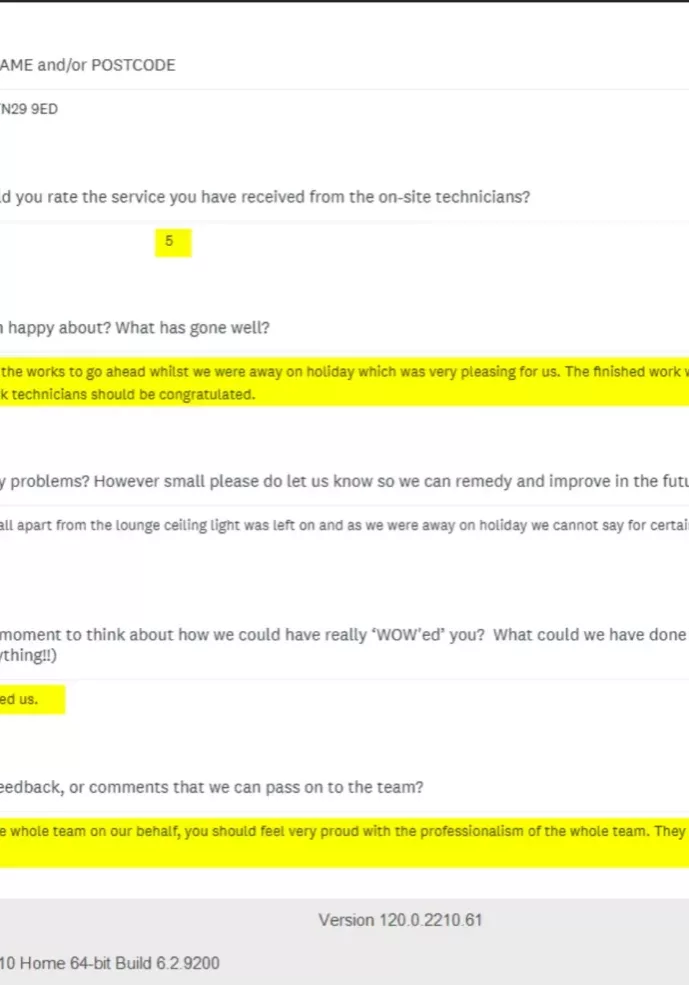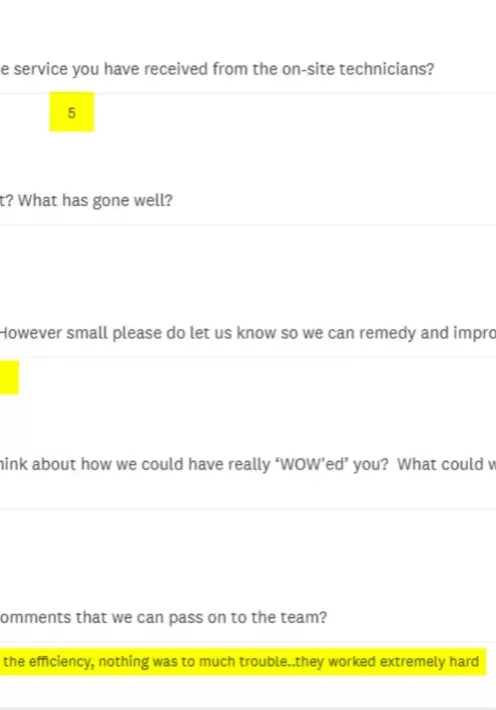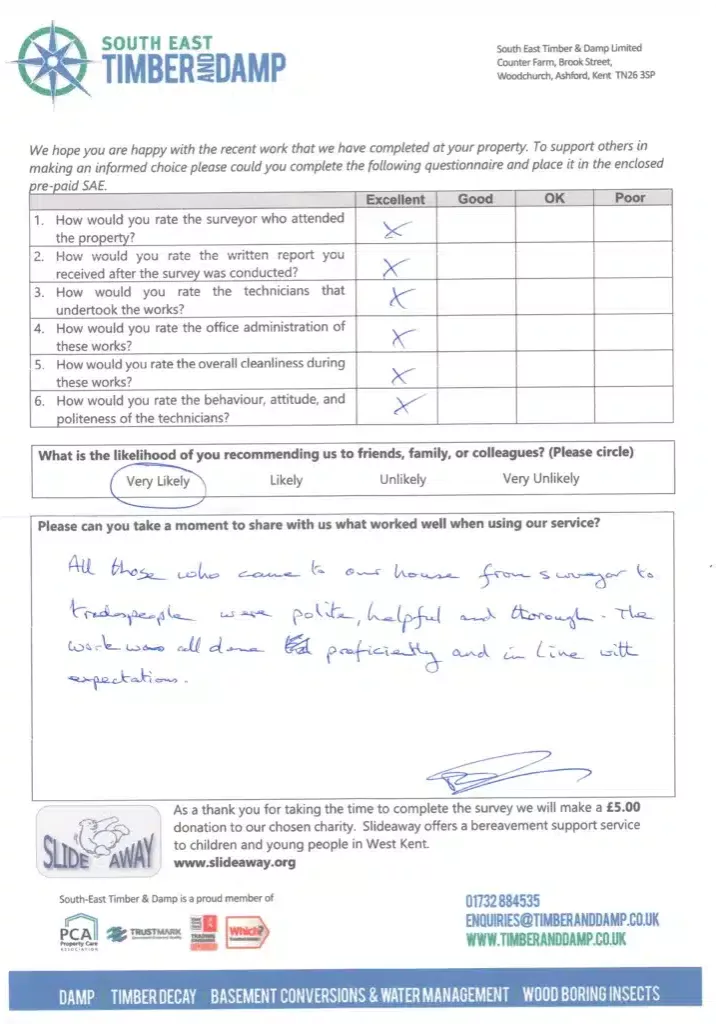Book your survey today!

The Basics of Dry Rot
Quite simply, dry rot is trouble for any property. It is an aggressive fungal infection that will impact the structural foundation of the timber in your property and needs to be treated by professionals quickly and efficiently.
Let's dispel a common misconception right from the start: it does not exist in dry conditions; it will only occur in the damp.
It results from either a dry rot spore landing on a surface or cross-contamination from another material. However, the spores aren't enough on their own. They need oxygen, the correct temperatures, and the proper sustenance in the form of food and water, all found in your wood.
Dry Rot
The spores that cause Dry Rot (Serpula lacrymans) need fuel to grow and multiply rapidly. Their primary energy source is the cellulose and hemicellulose in the wood. As it attacks your timber, it will dry it out, leaving it brittle and vulnerable. It doesn't, however, attack the structural lignin of the wood.
While there are similarities between Dry and Wet Rot, both require dampness to grow; the main difference is that dry rot will spread beyond its initial moisture source, often bridging non-timber surfaces in the hunt for cellulose-rich wood.
Once established, it will grow into what's called a sporophore (which looks a little like a mushroom), dispelling millions of spores that could result in even more Dry rot.

Our Customer Reviews
How to identify Dry Rot
The appearance depends on its stage of development. Identification is also hampered because it is generally found in areas you can't see, whether under the floorboards, in the attic, or hidden behind plasterboard.
It flourishes in areas of poor ventilation and requires the moisture that exists in wood as fuel to thrive. One of the non-visual indicators to be aware of is a stale, musty smell that will emanate from the affected area.
Dry Rot Tell-Tale Signs
The early tell-tale signs are the emergence of Sporophores, known as Fruiting Bodies or the shrinking of timbers. By its nature, dry rot aims to extract the moisture from the wood, which shrinks the wood and leaves significant cracks along the grain.
If the condition is left unchecked, the latter stages of the infection will affect the stability of the wood, and this will become noticeable quickly.
Difference between Dry and Wet Rot
The main difference between dry rot and many other fungal infections is the fact that it will spread quickly. It only requires 20% moisture in the wood to develop and has no problem capitalising on the porous nature of masonry to find its next food source.
Since it generally exists hidden from view, it is probably worth considering that the situation in your house will likely be in an advanced state, and early action will always result in a better outcome
For more information, here is some guidance from our partners at the PCA.

Need help? Book a survey at a time to suit your schedule
Our mission is to give you the peace of mind you deserve when it comes to waterproofing your house or business. Commission a survey from our team to assess your situation professionally.






